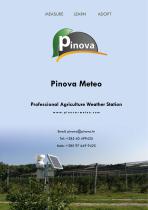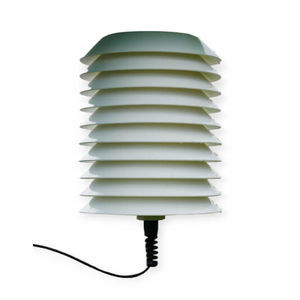
- Company
- Products
- Catalogs
- News & Trends
- Exhibitions
Connected rain gauge RG300
Add to favorites
Compare this product
fo_shop_gate_exact_title
Characteristics
- Other characteristic
- connected
Description
The Rainfall Sensor is a module that comes in the basic model of the Pinova Meteo Agrometeorological Station and is used to accurately measure the amount of rainfall.
Measurements are performed periodically, with data storage for later analysis of total precipitation amount in liters per m2 during:
10 minutes
two hour
6 hour
One day
One montd
or year
The Pinova precipitation sensor works according to the “tipping bucket” mechanism (Webster, 1999). Rain, snow, hail and/or other precipitation fall into a roller bowl with an opening at the top. The burst is then left through the opening on the bowl and is collected in one of the two small chambers that move around the support point. These small chambers are made in narrow tolerances to achieve the exact amount of rainfall in each of them. The rain from the bowl is poured into one of the chambers. When it is filled with the appropriate amount of precipitation, which is equal to the increment that is measured by the chamber (0.1 mm), the chamber is overcome to one side and then the full chamber is empty and the empty space reaches the appropriate position to pass trough the next step rainfall. Every time the chambers are switched on, the switch is connected and a pulse is generated.
Resolution - 0.1mm
Acuration - 0.2-20 mm/h ±10%; >20 mm/h +5/-15%
Repeatability of the measurement - ±5%
Min. Measurable amount - 0.1 mm
Max. Measurable amount - Unlimited (mm/h)
Sensor type - Double-spoon tipping bucket with funnel
Method of measurement - Magnetic relay
Output signal - 100ms pulse/cycle
Power - 3-6 V DC
Consumption at idle - 0 A
Funnel material - Polyester composite, UV resistant
Surface area - 300 cm²
Catalogs
Related Searches
- Weather station
- Temperature weather station
- Relative humidity weather station
- Weather station with data logger
- Battery-powered weather station
- Wireless weather station
- Solar-powered weather station
- Wind speed weather station
- Precipitation weather station
- Temperature humidity sensor
- Soil moisture sensor
- Wind direction weather station
- Digital thermo hygrometer
- Agriculture weather station
- Soil moisture weather station
- Rain gauge
- Digital temperature probe
- Automatic weather station
- Professional weather station
- Electric weather station
*Prices are pre-tax. They exclude delivery charges and customs duties and do not include additional charges for installation or activation options. Prices are indicative only and may vary by country, with changes to the cost of raw materials and exchange rates.





